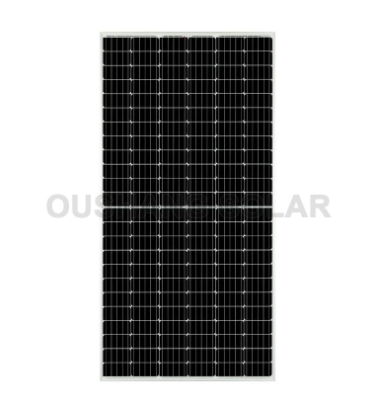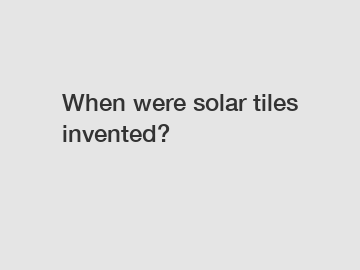Do You Know the History of Solar Panels?
Before Bell Labs invented the first modern solar panel in 1954, the history of solar energy was one of the experiments after experiment driven by individual inventors and scientists. Then the space and defense industries recognized its value, and by the end of the 20th century, solar energy had become a promising but still expensive alternative to fossil fuels. In the 21st century, the industry has reached maturity, developing into a proven and inexpensive technology that is rapidly replacing coal, oil, and natural gas in the energy market. This timeline highlights some of the major pioneers and events in the emergence of solar technology.
Who invented solar panels?
Charles Fritts was the first to use solar panels to generate electricity in 1884, but it would be another 70 years before they became efficient enough to be useful. The first modern solar panels, which were still very inefficient, were developed by three Bell Labs researchers, Daryl Chapin, Gerald Pearson, and Calvin Fuller. Russel Ohl, a predecessor at Bell Labs, discovered how silicon crystals functioned as semiconductors when exposed to light. This set the stage for these three pioneers.
The time history of solar panels
19th - early 20th centuries
Physics flourished in the mid-19th century, with groundbreaking experiments in electricity, magnetism, and the study of light. The basics of solar energy were part of that discovery, as inventors and scientists laid the groundwork for much of the technology's subsequent history.
In the late 19th and early 20th centuries
The emergence of modern theoretical physics helped lay the groundwork for a better understanding of photovoltaic energy. Quantum physics' description of the subatomic world of photons and electrons revealed the mechanics of how incoming light packets perturb the electrons in silicon crystals to produce electric currents.
Tip: What is the photovoltaic effect?
The photovoltaic effect is the key to solar photovoltaic technology. The photovoltaic effect is a combination of physics and chemistry that creates an electric current when a material is exposed to light.
Additional resources:
Who Benefits Most from Energy Efficient Pumping Systems?
Where to buy the top-rated lithium-ion batteries for solar panels in Germany?
Which golf cart lithium battery is the best purchase for an eco-friendly future?
N2He Leak Test: Are Faulty Pipelines Jeopardizing Safety?
Why does energy need to be stored?
Solar Panels: Revolutionizing Buildings & Saving Money – Ultimate Guide!
Which powder transfer pump brand offers the best value for the purchase stage?
Mid-20th century
Serious research into the development of solar technology left the laboratory, based on the invention of the monocrystalline silicon solar cell. Like many other technologies, it emerged from research conducted for the U.S. defense and space industries, and its first successful uses were in satellites and space exploration. These uses proved the effectiveness of solar energy, although most technologies are still too expensive to commercialize.
Late 20th century
The energy crisis of the early 1970s spurred the first commercialization of solar energy technology. Oil shortages in the industrialized world led to slow economic growth and high oil prices. In response, the U.S. government created financial incentives for commercial and residential solar systems, research and development institutions, demonstration projects using solar power in government buildings, and a regulatory structure that still supports the solar industry today. With these incentives, the cost of solar panels dropped from $1,890/watt in 1956 to $106/watt in 1975 (prices adjusted for inflation).
21st Century
From an expensive but scientifically sound technology, solar energy has benefited from continued government support to become the lowest-cost energy source in history. Its success follows an S-curve, where a technology initially grows slowly, driven only by early adopters, and then experiences explosive growth as economies of scale bring down production costs and supply chains expand. in 1976, solar modules cost $106/watt, while by 2019 they had fallen to $0.38/watt, with 89% of the decline occurring in 2010.
We are a solar panel supplier, please feel free to contact us if you need them.
The Ultimate Guide to 3 Phase Hybrid Inverters in Canada
How much does a LFP battery cost?
Which Timeast Pipeline Service offers the best value for money?
Which solar inverter brand offers the best price?
BIPV Spandrel Panels: Enhancing Aesthetics and Functionality
Which industries can benefit from pneumatic pump technology?
6 Common Mistakes to Avoid When Installing Solar Panels
Related Articles











Comments